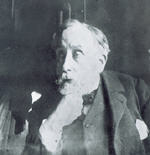
Edgar Degas As the son of a wealthy Parisian banking family, Edgar Hilaire Germain Degas originally planned to study law before opting to enter the Ecole des Beaux Arts in 1855. His studies there strongly emphasized traditional drawing skills. Degas excelled and his extraordinary draftsmanship became a hallmark of his work. In 1856, Degas traveled extensively throughout Italy where he studied renaissance and classical masterpieces.
As a founding member of the Impressionists, Degas helped to organize the ground-breaking exhibition of 1874, exhibiting 10 of his own pieces in this inaugural show. While historically labeled an Impressionist, Degas preferred the term
"Naturalist". He seldom painted en plein- air. Instead preferring to work from sketches and models. The artist once said:
"My art has nothing spontaneous about it, it is all reflection." His studies frequently convey an element of psychological tension, offering the viewer intimate vignettes of life in late 19th century Paris. Fascinated with the movement of forms through space, Degas often sketched dancers from the wings of theaters, working in pastel and charcoal to capture his subjects with an unrivaled immediacy. Women dancing or merely engaged in the activities of daily life consistently his favored subject. Scholarship is currently divided as to whether Degas was a misogynist or an early feminist but the raging controversy has yet to dampen enthusiasm for the artist's work.
Degas liked photography so he painted similar to how a camera would capture a picture.